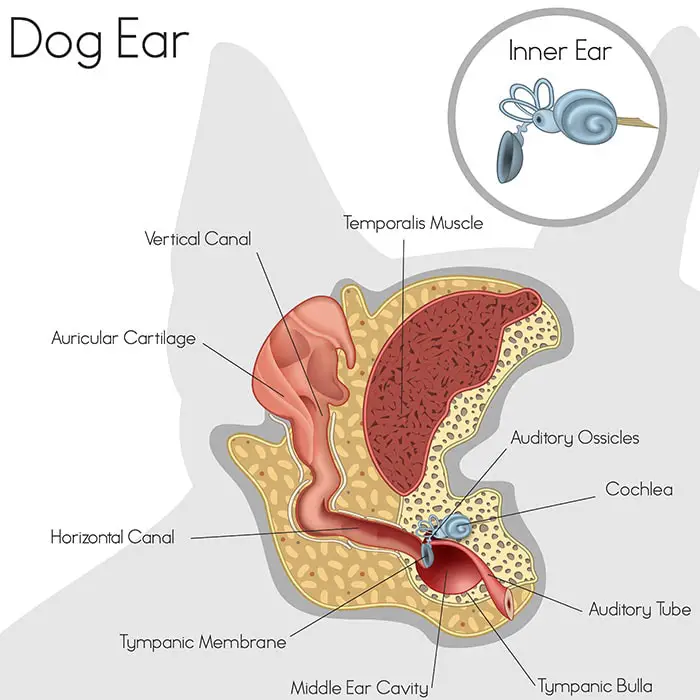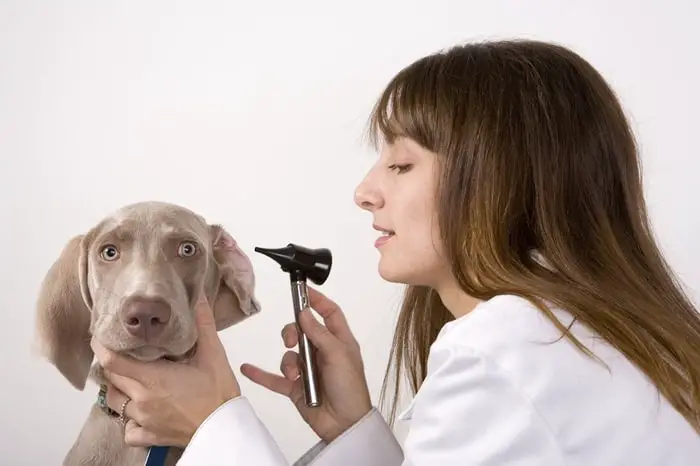Vestibular disease in dogs or canine vestibular syndrome is a progressive disturbance of balance. A loss of balance mainly manifests the disease. The disease is commonly seen in older dogs. The disease is also called older dog vestibular syndrome or canine idiopathic vestibular syndrome.
Vestibular System of Dogs
The vestibular system resides in the brain and connects the inner and middle ear. The dog’s vestibular system is responsible for maintaining a balance of the animal’s body. The balance system of the animal prevents the falling of animals during a stand or walk. The system works with ears, eyes, brain, and coordination with limbs and head to the whole body.

Risk Factors Canine Vestibular Syndrome
The disease is specific to a few conditions like:
- The old age of dogs.
- Few breeds like German Shepherd and Doberman Pinscher.
- Any injury to the inner or middle ear.
- Ear infection.
- Lack of care of dog’s ear during grooming.

Causes of Canine Idiopathic Vestibular Disease
The common causes of the disease are
- Infection in the middle or inner ear.
- Tympanites or otitis (inflammation of the inner ear).
- A punctured wound in the eardrum.
- Tumors or polyps in the inner ear.
- Neuritis or inflammation of nerves responsible for the balance.
- Deficiency of vitamin B1 (thiamin).
- Hypothyroidism in dogs.
- Drug toxicity.
- Side-effects of certain antibiotics.
Clinical Signs of Vestibular Disease in Dogs
The disease is onset suddenly and more disturbing with the first 24-48 hours. The most common clinical signs of the vestibular syndrome in dogs are:
- Loss of balance.
- Incoordination.
- Head tilt.
- Nystagmus or irregular shaking of the head.
- Loss of hearing.
- Paralysis of facial muscle (dropping of the face).
- The dogs will become reluctant to stand or walk.
- The dogs may fall in the direction of head tilt.
- Nausea or vomiting.
- Loss of vision.
- Difficulty if feeding and drinking.
- The dog will be weak, have seizures, and death.
Diagnosis of Canine Vestibular Syndrome
Canine idiopathic vestibular disease can be diagnosed by:
- Clinical history of the age of dogs, history of a wound in middle ear or head.
- Specific clinical signs.
- Blood analysis.
- Urine analysis.
- Measurement of blood pressure.
- Radiography (X-ray) of the head to measure or see the condition of a dog’s inner and middle ear.
- Magnetic Resonance Imaging (MRI) is also effective in seeing the nerve and inner ear condition.
- Computed Tomography (CT) scanning of inner ear and head.
- Brainstem Auditory Evoked Response (BAER) is also performed in some patients.
- Evaluation Cerebrospinal Fluid (CSF).

Treatment of Vestibular Disease in Dogs
The treatment of the disease is based on the underlying causes. The treatment for the disease is primarily supportive. The strategies followed are:
- Administration of fluid or electrolyte therapy.
- Hospitalization of dogs until come normal.
- Sedatives can be given to make calm the animals.
- Dugs that reduce nausea or vomiting can be given.
- Antibiotics can be given if there is an infection or wound in the middle or inner ear or the eardrum.
- Antihistamines can be given to reduce itching.
- Corticosteroids can be given to relieve pain and promote the healing of ear infections.
Can Dog Survive with Vestibular Disease?
The prognosis of the disease is variable. The disease is more dangerous within the first 24-48 hours after induction. The dog may cure if the disease is diagnosed early and treatment starts. The dog improves after 7-10 days of treatment. If the condition is not improving, the dogs need to further sophisticated diagnoses.
Final Advice on Canine Vestibular Syndrome
Vestibular syndrome is a common disease in dogs over 8-10 years. The disease is mainly manifested by incoordination, nystagmus, and head tilt without any previous history. The disease can arise from ear infections in young dogs also. The disease can be appropriately treated after accurate diagnosis as early as possible.